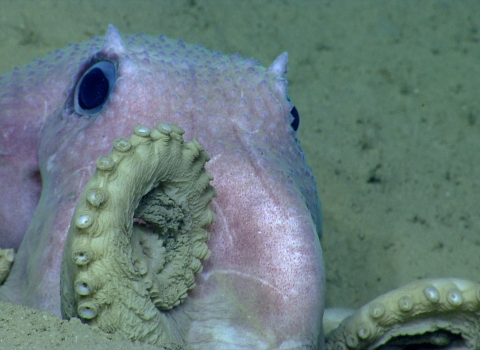DENVER — Today the U.S. Fish and Wildlife Service is releasing the final environmental impact statement for the Nebraska Public Power District’s (NPPD) application for a permit for take of the endangered American burying beetle. The statement analyzes potential effects to the beetle and other factors to the human environment that would result from issuance of a take permit associated with the proposed R-Project transmission line.
The NPPD’s R-Project is a 225-mile long, 345-kilovolt transmission line that would cross high-quality migratory bird habitats, including rivers, wetlands, and meadows in the Sandhills region of north-central Nebraska. The project is intended to enhance the reliability of NPPD’s electric transmission system, relieve congestion from existing lines, and provide opportunities for development of renewable energy projects, including wind power. The project will also impact habitat for the beetle and migratory birds, which are diverse and abundant along certain areas of the R-Project route.
The Endangered Species Act prohibits “take” of a listed species, meaning that under the Act, the Service can issue permits for the "incidental take" of endangered and threatened species – take that is the unintended result of otherwise lawful activities – as long as the applicant designs and implements a comprehensive habitat conservation plan that both minimizes and mitigates harm to the impacted species during the proposed project. As a result, NPPD prepared a habitat conservation plan for the American burying beetle, as well as a migratory bird conservation plan to ensure the potential impacts to birds like whooping cranes and bald eagles would be minimized.
In the habitat conservation plan for the American burying beetle, the NPPD proposes to fully offset potential take of the beetle by setting aside 600 acres of suitable habitat for protection and management. The migratory bird conservation plan ensures impacts to migratory birds are minimized. Further, NPPD also prepared a land restoration plan that details the measures they will voluntarily implement to restore beetle habitat, fragile sandy soils, and other habitats disturbed by R-Project activities.
Upon review of the public comments on the draft environmental impact statement, concerns were expressed regarding the transmission line’s negative impacts to whooping cranes due to the potential for collision. In response, the Service conducted a scientific review and analysis, which concluded that the risk of whooping crane collision is low and is not reasonably certain to occur.
The Service continues to further the Department of the Interior’s commitment to increase the nation’s energy independence while working with our partners to develop meaningful and comprehensive avoidance, minimization, and mitigation measures that conserve wildlife.
After the 30-day public inspection period, the Service will sign a Record of Decision and make a final decision on the incidental take permit if all requirements are met. To read the final environmental impact statement and conservation plans as well as the Service’s response to public comments, please see our notice in the Federal Register at regulations.gov. Additionally, documents are be available on our website and in person inspection by appointment during normal business hours at U.S. Fish and Wildlife Service, Nebraska Field Office, 9325 South Alda Road, Wood River, NE 68883 and at the following libraries:
- North Platte Public Library, 120 West 4th Street, North Platte, Nebraska.
- Logan County Library, 317 Main Street, Stapleton, Nebraska.
- Hooker County Library, 102 North Cleveland Avenue, Mullen, Nebraska.
- Garfield County Library, 217 G Street, Burwell, Nebraska.
- Ewing Township Library, 202 East Nebraska, Ewing, Nebraska.
- Ainsworth Public Library, 455 North Main Street, Ainsworth, Nebraska.
- Valentine Public Library, 324 North Main Street, Valentine, Nebraska.
- Thomas County Library, 501 Main Street, Thedford, Nebraska.
The mission of the U.S. Fish and Wildlife Service is working with others to conserve, protect, and enhance fish, wildlife, plants, and their habitats for the continuing benefit of the American people. For more information on our work and the people who make it happen in the West, connect with us on Instagram and Facebook, follow us on Twitter, watch our YouTube channel at and download public domain photos from Flickr.

